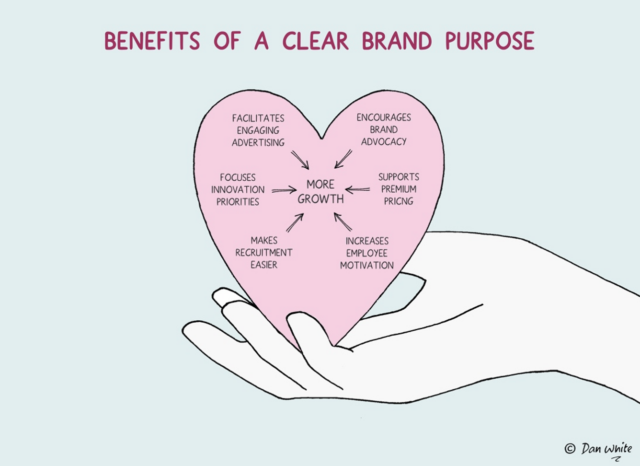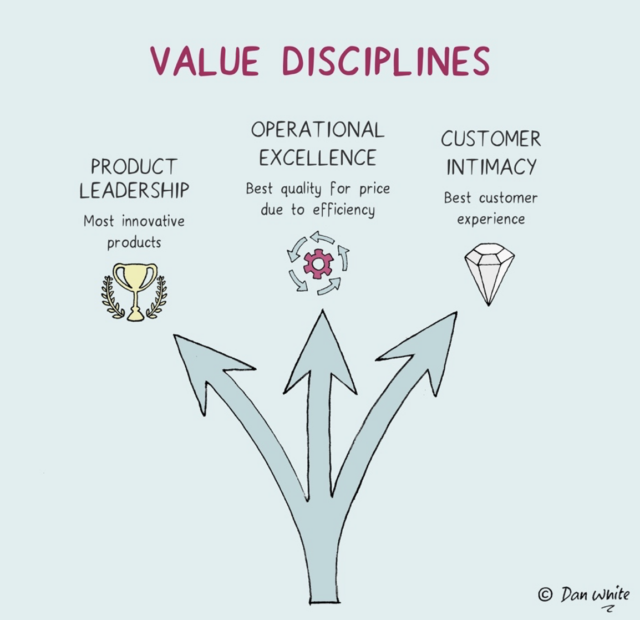Brands are born when someone has an idea for a product that they believe others will want to buy. There’s a reason for bringing the brand into the world – a clear purpose. Eric Ryan and Adam Lowry, cofounders of Method cleaning products, believed that people would pay more for eco-friendly products if they were both stylish and helped clean up the planet. The rapid growth of their brand proves they were right.
The brand purpose should be based on what the company does or could be best at, and on what the leaders and employees want it to be. A brand whose purpose stems from what the company already does but inspires employees to do it better, is more likely to succeed.
The ‘value disciplines’ framework, developed by business strategists Treacy and Wiersema in the 1990s, helps companies identify the area in which they have potential to rise above the competition and could use to define their brand purpose. The framework acknowledges that an organization operating in a competitive market with finite resources cannot be the best at everything.

The framework highlights three potential disciplines in which to specialize, so that a customer who prizes one discipline in particular will value the brand above others. Successful companies deliver adequately in all disciplines but stand out from competitors in one. To do this, they focus their energy and resources on their chosen discipline rather than trying, and failing, to address every customer need.

The very best marketers either choose to work for a company with a clear brand purpose or inspire their company to discover (or rediscover) one. With a purpose in place that the company can rally behind, the next task is to develop the brand strategy. This is a business plan defining how the company will make money from products(s) using the brand name, which includes:
- A long-term financial objective (e.g., $400k annual profit within five years)
- A description of who will buy the brand based on the brand purpose (e.g., people with an annual income of >$75K who love driving but want to protect the planet)
- A definition of the product(s) that will be sold and when they will be launched and upgraded (e.g., expanded network of charging points in year two, a lighter model with double the battery capacity in year three)
- The numbers that will be sold each year and the average selling price (aligned with the financial objective)
- The associations that will be built around the brand to accelerate growth
Contributed to Branding Strategy Insider by Dan White, author of The Soft Skills Book, The Smart Marketing Book and The Smart Branding Book
The Blake Project can help you define and develop your brand purpose.
Branding Strategy Insider is a service of The Blake Project: A strategic brand consultancy specializing in Brand Research, Brand Strategy, Brand Growth and Brand Education




